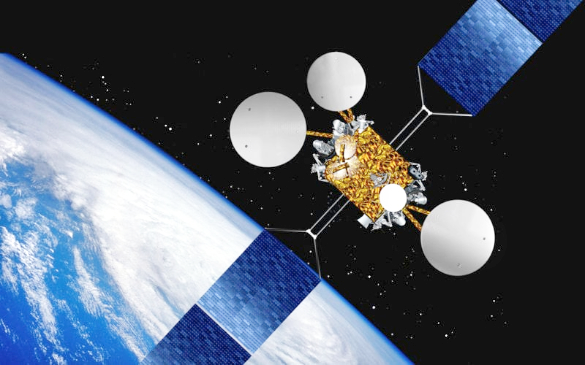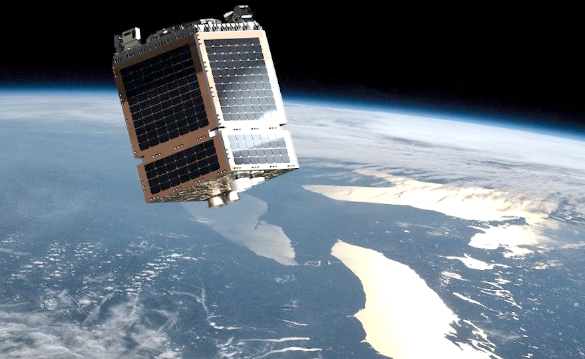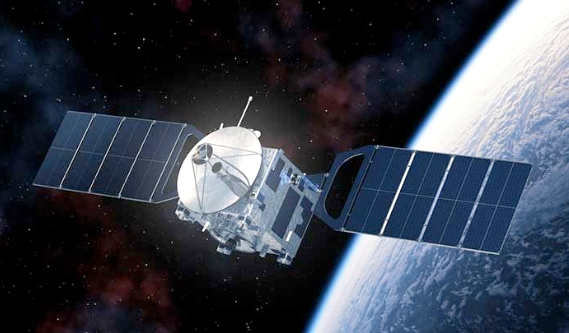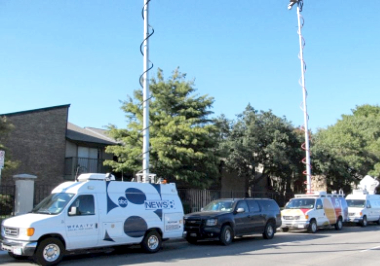Martin Coleman was Executive Director, the SATCOMs Innovation Group (SIG), until December of 2019 and is now part of SIGs Advisory Board. Since 2011 (…as IRG), he has been active in spearheading several significant initiatives, leading the advance in new tools to resolve all types of VSAT interference (e.g. SatGuard) and introducing Carrier ID. Martin regularly addresses the industry on the management of Spectrum and Space, including radio frequency interference (RFI), at global industry events and facilitates SIG workshops throughout the year. Martin also specializes in Network Management, Communication Projects, Event Management and various Workshops.
5G networks deliver high-speed connectivity to consumers and is set to overhaul technological processes throughout society. We are already seeing that the demand for 5G is exceeding capacity in some areas; as consumers, our data consumption is increasing sharply due to a combination of higher usage and data-hungry applications.
Consumers expect high-quality connectivity, with many elements of their lives now being managed through the devices in their pockets. The Internet of Things (IoT) market is set to significantly grow with the prediction of $1,463.19 billion in worth by 2027 (24.7% CAGR).
Questions arise, such as... What is the SATCOM industry’s role within this connectivity? Can we expect to see 5G and satellite working together to deliver high-throughput and geographically wide-reaching services? Or should it be based on expanding the cell structure of mobile systems using the LEO, MEO and GEO capacity?
Martin, what is your take on the impact of 5G

Martin Coleman
Many industries are looking at how 5G can improve efficiencies. Unlike before, 5G delivers users with an opportunity to build telecommunications into wider network infrastructures; its reliability and speed means that files can be transferred quickly, and the data heavy applications can be accessed wherever there is a 5G connection available. Many industries are seeing this as a brilliant opportunity to create low-cost, in-field systems which can be set up with minimal infrastructure. Broadcasters can send their content to the central distribution system directly from location using 5G.
Engineers can directly access their applications from on-site. Remote monitoring can become more efficient, with IoT and wearable devices connecting directly to 5G networks. 5G will be a huge disruptor within every industry as it will transform the reliability and accuracy of connections, enabling dependability on new connected infrastructures.
How will satellite be impacted?
Martin Coleman
Initially, there was a focus on 5G’s impact on satellite within broadcasting and media, with many seeing 5G as a less expensive alternative to satellite. Although this highlights 5G as a direct competitor in some respects, there are many broader opportunities for satellite within 5G.
Many of the benefits of satellite are unique. Satellite boasts capabilities in delivering high throughput and bandwidth, something which is needed as dependency grows on data heavy applications. Although sophisticated, 5G will need to rely on SATCOM for backhaul services.
For example, the more towers being used by telcos, the more efficient it would be to have them served by one central uplink via satellite. As the use of 5G develops, so will the need for its capabilities. Both the telecommunications and SATCOM industries will benefit hugely from working alongside one another to deliver high-quality services to end users.
Beyond throughput, another of SATCOM’s strengths is its wide geographical range. As we are already seeing, 5G has a significant hardware infrastructure and rollout will take time. There will not be a business case for 5G to be instated in this way in geographically remote areas. With mega constellations being deployed, can SATCOM also bridge this gap? Many LEO satellites are already incorporating systems to enable 5G interoperability in the future as their services will be well- suited due to low latency and low-cost solutions. Consumer need for seamless connectivity is the driver behind 5G, and, once again, communication networks are seeing the potential of working alongside one another to deliver the best coverage to customers.
What is the current situation?

Martin Coleman
Discussions regarding 5G and SATCOM have been dominated by spectrum sharing, with many issues surrounding the keeping and selling of frequency bands. However, has this been impeding the industries from discussing what is important? There are many opportunities for both SATCOM and terrestrial industries to work together, however it is important that the SATCOM industry engages with the telecom industry now to become an integral part of its networks.
Technologically, the SATCOM industry is in a significant phase of development. What can we do during this overhaul to help slot into the 5G network, you may ask? The focus must be on interoperability and the inclusion of 4G. Both hardware and software at the ground segment must align with solutions from the telecom industry to enable future partnerships. To improve accessibility, we know that satellite must reduce costs. However, a proprietary approach will never achieve that reduction, and therefore terrestrial will be forced to continue its own development without using SATCOM.
Satellite needs to implement a modified version of existing 5G protocol standards and a specialized management layer to allow satellite transmissions to be a seamless connection for 4G and 5G (and beyond) so that routing via terrestrial or satellite is simple. For example, using DTH standards has proved profitable for our industry. The same must be applied to provide connections for all mobile and associated services such as IoT applications.

Where can SATCOM fit?
Martin Coleman
Importantly, there must be a dialogue between the mobile and satellites industries. Without this, there runs a risk that SATCOM will not maximize its potential within 5G.
We’ve had many discussions surrounding backhaul and the continued role for satellite within 5G. It’s important to note that the mobile industry only uses backhaul via satellite when it must, and it is not the preferred method of operation due to its cost and complexity. Mobile only uses approximately 1.5% of its total network connectivity using satellite backhaul.
However, there is a significant difference in revenue generation between the two industries which is why, when looking at the satellite industry’s business, backhaul accounts for around 20+% of its revenue. We need to push the conversation forwards and look toward innovation. Only focusing on backhaul could limit the industry’s role within 5G. The satellite industry needs to focus on developing the right technology to position its role within the 5G infrastructure; the telecom industry will not do that on SATCOM’s behalf. Should the satellite industry be viewing 5G as a SAT 3.0 revolution? I certainly think so. However, as the industry progresses into this discussion, it must focus on what’s important to the user. For example, in-flight connectivity (IFC) to the internet for passengers isn’t currently a smooth process, however the device being held by the consumer is not the problem, which is each airline company is running its own internet offering based on a proprietary service that is only applicable to itself. This means that the customer is having to log in, submit details and provide payment for every flight. That is an interrupted user experience that is being caused by the complexities of billing; making this seamless should be a priority for communications companies.

By stepping away from the propriety thought process that dominates our industry, satellite services can fit into a far better user experience. We all know the current billing structure within mobile/cell services. The customer pays for a tailored package, this is set up by the mobile operator and this means that the customer can turn on their phone and immediately connect to the network. Extras can be added at a touch of a button and are immediately implemented by the mobile operator.
Could this be extended to include a wide range of SATCOM services? I believe so — mobile operators could include services, such as personalized air minutes or a cruise ship pack. The mobile operator could then pay the airline for its usage and become part of the equipment supply chain. Crucially, this removes the barrier of payment and enables operators to provide a seamless service to customers, thus building SATCOM into the way consumers use their devices. By moving away from proprietary services, SATCOM can integrate behind mobile operator services.
How does technology need to adapt?
Martin Coleman
To match the service provision outlined, a better Network Technology concept needs to be in place. By considering an aircraft or cruise ship as integrated cells, the service become a continuation of the mobile cell structure. we need to maximize 5G and the satellite industry needs better, standardized protocols and signaling layers for satellite connectivity to both the current 4G and the new 5G environment. We need to advance how we use and integrate IP everywhere. The communication industries must build infrastructures from a shared, common ground. New modulation schemes are required to allow data to flow efficiently.
Additionally, the industry needs to ensure that networks are software defined to manage the more complex management scenarios. Automated management systems, using artificial intelligence (AI) and machine learning, could seamlessly manage both network and spectrum to deliver connectivity from across industries to users. As we look ahead to the technologies required, it will be important that suppliers deliver standardized and open application interfaces. Within telecommunications, operational and application maps are readily available to enable suppliers to produce equipment suitable for supplying its networks.

As consumer reliance upon the internet grows, so does the need for seamless connectivity. 5G will overhaul numerous industries, allowing for quick access to lots of data. SATCOM will have several significant roles in 5G which will help to improve the reach, capabilities, and reliability of 5G.
As SATCOM adapts to the latest technologies, prioritizing 5G among updates and addressing its role within the wider landscape of communications will enable it to secure its position within mainstream connectivity. A seamless, connected network will benefit both consumers and businesses. The industry must prioritize their discussions with the telecommunications industry to determine how connectivity infrastructures can be improved for the benefit of all.

